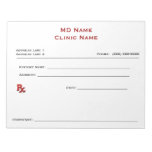The Kaiser Family Foundation reported that in 2016 half of all insurance policy-holders faced a deductible of at least $1,000. For people who buy their insurance via one of the Affordable Care Act’s exchanges, that figure was even higher with almost 90% of patients facing a deductible of $1,300 for an individual or $2,600 for a family.
Even so-called “Cadillac” insurance plans with low deductibles and generous reimbursements often leave huge gaps in coverage and patients holding the bag for large medical bills. Many people have separate—and often hard-to-understand—in-network and out-of-network deductibles, or lack out-of-network coverage altogether. And, with out-of-pocket medical expenses capped at $14,300 for a family of four in 2017, the expenses patients must cover can be an insurmountable number for many families
Looking at those figures alone, it’s evident that even with insurance coverage, patients can expect to pay between $1,000 and just over $14,000 out-of-pocket each year. Combine that with the fact that the most recent Report on the Economic Well-Being of U.S. Households, an annual survey conducted by the Federal Reserve Board, found that 44 percent of adult Americans claim they could not come up with $400 in an emergency without turning to credit cards, family and friends, or selling off possessions. It’s easy to see why so many patients are unable to pay for even life-saving medical services.
Skipping follow-up care, cutting pills in half to make them last longer or stopping their drug regimen are now all-too-common patient stories. In fact, according a 2015 survey by the Kaiser Family Foundation, for people who have insurance coverage but whose deductible equals at least 5 percent of their income, 40 percent said they’ve decided not to go to the doctor when they thought they needed to.
This leaves physicians and all care providers in the unenviable situation of trying to decide whether they will turn patients away for being unable to pay, accept less for their services or find creative ways to help patients get the care they need while still getting paid.
Although helping with fees can be trickier for patients that are covered by insurance since most insurance companies don't allow waiving co-payments or deductibles, there are things you can do to help patients, with and without insurance, who can’t afford to pay for their care.
1. Have the Money Conversation
Discussing costs and options can lead to cost savings for patients without lessening the quality of care. The problem is that physicians aren't trained to discuss financial matters with patients and often feel it's inappropriate to bring up money during a patient visit.
However, the fact is that full disclosure of costs encourages patients to plan ahead and pay more promptly. The more informed the patient is about the approximation of their fees, the more likely they are to pay.
A good way to start the money conversation is by asking a few questions on the patient intake form. Ask patients to let you know about any concerns with costs or if they are experiencing difficulty paying past medical bills. Then, follow up in the exam room.
Your goal should be to bring patients into the decision-making process. For example, something as simple as prescribing a 90-day supply of medicine can help reduce out-of-pocket costs for medications. You could also talk with patients about scheduling expensive tests later in the year when their annual deductibles are more likely to have been met.
2. Be Empathetic to Patient Concerns
With patients increasingly responsible for more of their own health costs, finding appropriate and affordable care is more important than ever. A good resource is the ABIM Foundation’s Choosing Wisely® initiative, which provides hundreds of cost-effective options based on medical subspecialty and diagnosis. These range from drugs and tests to maintenance supplies and more.
3. Get Creative on Your Scheduling
Patients may not be able to afford $200 for a full consult. Offer instead a lower-coded visit that takes less time and schedule them during your slow periods such as mid-afternoon.
4. Offer a Payment Plan
Another option is to allow patients to pay a portion of their fees now and add the balance to a tab they can pay down over time or when their financial situation changes. Set up credit card on file and have the patient sign an agreement for a regular monthly charge to pay toward their debt.
5. Create a Sliding Fee Scale
One way you can offer a financial break to both low income and self-pay patients is to create a sliding fee schedule. Basically, this type of fee schedule provides a discount based on a family’s income in comparison to the Federal Poverty Guidelines. Here's an article where I go into more detail: 13 Steps to Creating a Sliding Fee Scale
6. Accept What They Can Offer
There will be times that patients have the best of intentions to pay yet are simply unable to do so due to financial difficulties. Having a frank conversation with the patient about what they are able to pay can help you still receive at least a partial payment for your services while giving the patient the care they need.
7. See Them Pro Bono
For patients with extreme financial problems and the health concerns to match, you may consider offering them care pro bono or at no charge. Just remember, you can’t care for your patients if your practice is in financial jeopardy, so only take on the number of pro bono patients that you can comfortably afford.
8. Refer Them or Help Them Find Assistance
If you and your patient can't agree on a fee—or you have already maxed the number of low-cost clients you can afford—send them to a local community hospital or clinic. Many offer low-cost or no-cost care to patients with proven financial needs.
You can also help your patients afford the cost of their medical care by helping them find the assistance they need. There are many organizations, both federal and private that provide assistance for medical and pharmaceutical intervention.
Here's an article where I provide a variety of resources to offer patients:
Assistance Resources to Share With Patients
9. Barter
Some patients who are unable to pay cash for their care may be able to pay in services or goods. For example, you could exchange consult or diagnostic testing fees for having your waiting room repainted or your website re-designed. Just be sure to agree on the value of the goods or services in advance and declare them as income at tax time.
10. Bring in Financing Companies
Another solution is to bring in financing companies that lend patients money for copayment bills as low as $300. Two third-party lenders that offer financing for patient bills are https://www.carecredit.com/ and www.mymedicalloan.com.
Use these tips to help patients who can’t afford to pay for the care they need and to keep your practice growing even during this challenging time in the health insurance landscape.




No comments:
Post a Comment